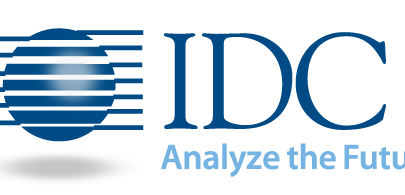
For Earth Day, SDSC Greens Up Its Batteries
April 22, 2022
Just in time for Earth Day, the San Diego Supercomputer Center (SDSC) has announced that it has replaced tens of thousands of pounds of toxic batteries with a m Read more…

Cronos Supercomputer Powers Insight at World’s 2nd Largest Electricity Supplier
November 3, 2021
The planning of electrical power supply today and in the future is a topic of discussion than impacts over six billion people on the planet right in their homes Read more…

ABB Upgrades Produce Up to 30 Percent Energy Reduction for HPE Supercomputers
June 6, 2020
The world’s supercomputers are currently allied in a common goal: defeating COVID-19. To analyze the billions upon billions of molecules that might produce he Read more…

IBM at Hot Chips: What’s Next for Power
August 23, 2018
With processor, memory and networking technologies all racing to fill in for an ailing Moore’s law, the era of the heterogeneous datacenter is well underway, Read more…

IBM Advances Against x86 with Power9
August 30, 2016
After offering OpenPower Summit attendees a limited preview in April, IBM is unveiling further details of its next-gen CPU, Power9, which the tech mainstay is Read more…
Report Addresses the Perils of Dark Silicon
July 21, 2016
Dark silicon refers to the processing potential that's lost when thermal constraints disallow full CPU utilization. The gap between transistor scaling and voltage scaling combined with tighter integration of components (multicore, SoCs) has power density ramifications that are of particular concern for embedded computing, but high-performance computing faces similar "dark power" challenges. Bringing attention to this issue and exploring common solutions was the goal of the Dagstuhl Seminar 16052, “Dark Silicon: From Embedded to HPC Systems.” Read more…

IBM Puts 3D XPoint on Notice with 3 Bits/Cell PCM Breakthrough
May 18, 2016
IBM scientists have broken new ground in the development of a phase change memory technology (PCM) that puts a target on competing 3D XPoint technology from Intel and Micron. IBM successfully stored 3 bits per cell in a 64k-cell array that had been pre-cycled 1 million times and exposed to temperatures up to 75∘C. A paper describing the advance was presented this week at the IEEE International Memory Workshop in Paris. Phase-change memory is an up-and-coming non-volatile memory technology... Read more…

IDC Server Report: China Surges; IBM Power Strengthens; ARM Stumbles
March 11, 2016
Led by strong growth in China, the worldwide server market grew 5.2 percent to $15.3 billion in the fourth quarter of 2015, reported market watcher IDC this wee Read more…

- Click Here for More Headlines

Whitepaper
Transforming Industrial and Automotive Manufacturing
In this era, expansion in digital infrastructure capacity is inevitable. Parallel to this, climate change consciousness is also rising, making sustainability a mandatory part of the organization’s functioning. As computing workloads such as AI and HPC continue to surge, so does the energy consumption, posing environmental woes. IT departments within organizations have a crucial role in combating this challenge. They can significantly drive sustainable practices by influencing newer technologies and process adoption that aid in mitigating the effects of climate change.
While buying more sustainable IT solutions is an option, partnering with IT solutions providers, such and Lenovo and Intel, who are committed to sustainability and aiding customers in executing sustainability strategies is likely to be more impactful.
Learn how Lenovo and Intel, through their partnership, are strongly positioned to address this need with their innovations driving energy efficiency and environmental stewardship.
Download Now
Sponsored by Lenovo
Whitepaper
How Direct Liquid Cooling Improves Data Center Energy Efficiency
Data centers are experiencing increasing power consumption, space constraints and cooling demands due to the unprecedented computing power required by today’s chips and servers. HVAC cooling systems consume approximately 40% of a data center’s electricity. These systems traditionally use air conditioning, air handling and fans to cool the data center facility and IT equipment, ultimately resulting in high energy consumption and high carbon emissions. Data centers are moving to direct liquid cooled (DLC) systems to improve cooling efficiency thus lowering their PUE, operating expenses (OPEX) and carbon footprint.
This paper describes how CoolIT Systems (CoolIT) meets the need for improved energy efficiency in data centers and includes case studies that show how CoolIT’s DLC solutions improve energy efficiency, increase rack density, lower OPEX, and enable sustainability programs. CoolIT is the global market and innovation leader in scalable DLC solutions for the world’s most demanding computing environments. CoolIT’s end-to-end solutions meet the rising demand in cooling and the rising demand for energy efficiency.
Download Now
Sponsored by CoolIT
Advanced Scale Career Development & Workforce Enhancement Center
Featured Advanced Scale Jobs:
HPCwire Resource Library
HPCwire Product Showcase
© 2024 HPCwire. All Rights Reserved. A Tabor Communications Publication
HPCwire is a registered trademark of Tabor Communications, Inc. Use of this site is governed by our Terms of Use and Privacy Policy.
Reproduction in whole or in part in any form or medium without express written permission of Tabor Communications, Inc. is prohibited.
























